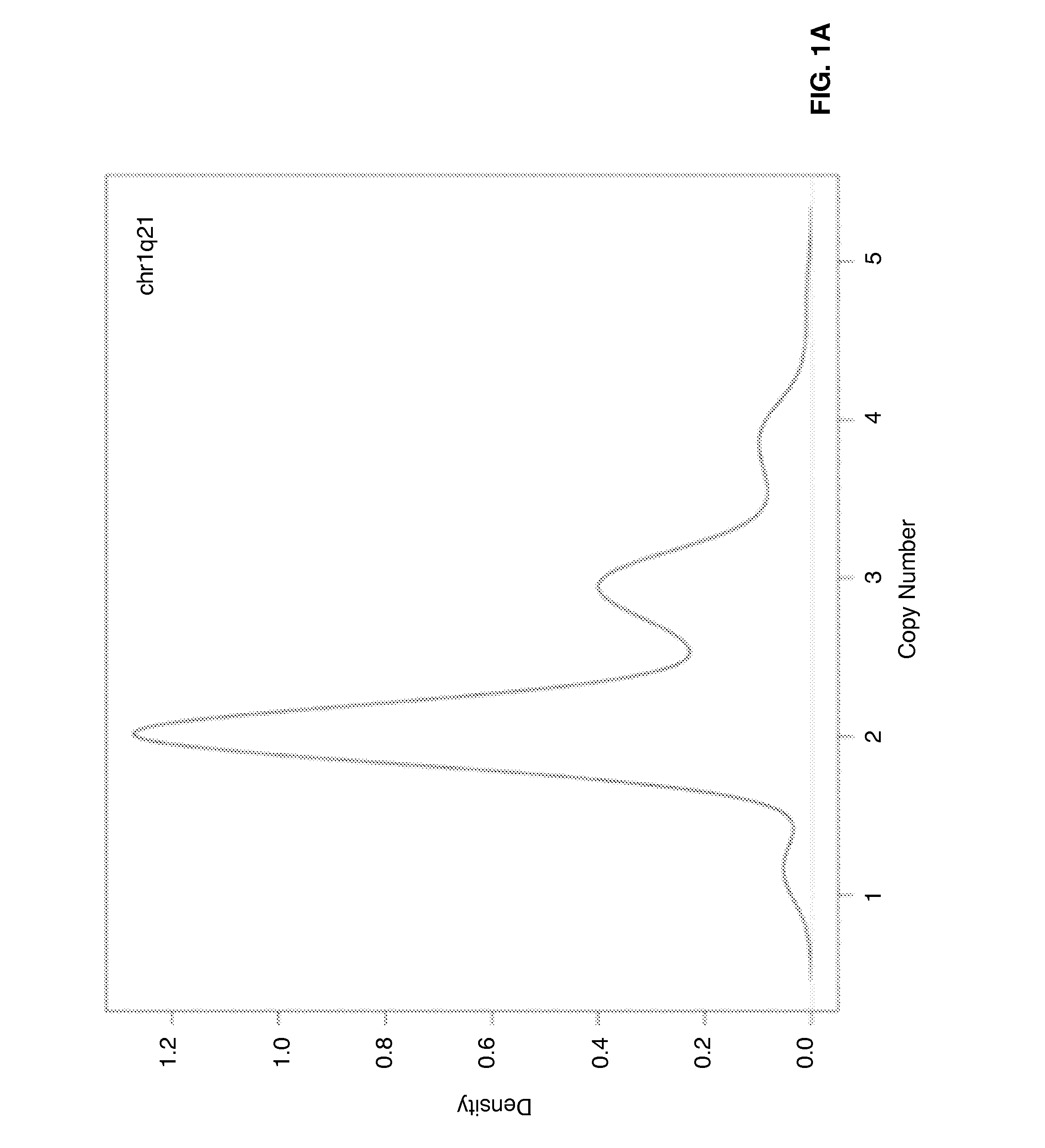Gene expression profiling of cytogenetic abnormalities
a cytogenetic abnormality and gene expression technology, applied in the field of cancer research, can solve the problems of difficult to differentiate between these two disorders, differential diagnosis is associated with a certain degree of uncertainty, and myeloma is not very well understood
- Summary
- Abstract
- Description
- Claims
- Application Information
AI Technical Summary
Benefits of technology
Problems solved by technology
Method used
Image
Examples
example 1
Study Subjects
[0047]Bone marrow aspirates were obtained from patients newly diagnosed with multiple myeloma, who were subsequently treated on NIH-sponsored clinical trials. Patients provided samples under Institutional Review Board—approved informed consent, and records are kept on file. Myeloma plasma cells were isolated from heparinized bone marrow aspirates with an autoMACS device (Miltenyi Biotec, Inc., Auburn, Calif.) using CD138-based immunomagnetic bead selection, as previously described (Zhan, 2002).
DNA Isolation and Array-Based Comparative Genomic Hybridization (aCGH)
[0048]High-molecular-weight genomic DNA was isolated from aliquots of CD138-enriched plasma cells with the use of the QIAamp DNA mini kit (Qiagen, Valencia, Calif.). Tumor- and sex-matched reference genomic DNA (Promega Corp., Madison, Wis.) was hybridized to the Agilent 244K aCGH array according to the manufacturer's instructions (Agilent Technologies, Inc., Santa Clara, Calif.).
Interphase Fluorescence In Situ...
example 2
Determination of Copy Numbers Sensitive Genes
[0054]Genome-wide gene expression profiles and DNA copy numbers (CNs) in purified plasma cell samples obtained from 92 newly diagnosed MM patients, using the Affymetrix GeneChip and the Agilent aCGH platforms, respectively. DNA copy number-sensitive genes were determined by Pearson's correlation coefficient (PCC) of gene expression levels and the copy numbers of the corresponding DNA loci. Applying the criterion of PCC >0.35, which kept the false-discovery rate to <5%, 1,114 copy numbers-sensitive genes were identified (Table 1).
[0055]On the basis of these copy number-sensitive genes, a vCA model was developed for predicting cytogenetic abnormalities in multiple myeloma patients by means of gene expression profiling. The model focuses particularly on chromosomes 3, 5, 7, 9, 11, 13, 15, 19, and 21, as well as the 1p, 1q, and 6q segments, which are the most commonly altered chromosome regions in myeloma plasma cells.
TABLE 1Genes in the vCA ...
PUM
| Property | Measurement | Unit |
|---|---|---|
| Gene expression profile | aaaaa | aaaaa |
| Fluorescence | aaaaa | aaaaa |
| Level | aaaaa | aaaaa |
Abstract
Description
Claims
Application Information
 Login to View More
Login to View More - R&D
- Intellectual Property
- Life Sciences
- Materials
- Tech Scout
- Unparalleled Data Quality
- Higher Quality Content
- 60% Fewer Hallucinations
Browse by: Latest US Patents, China's latest patents, Technical Efficacy Thesaurus, Application Domain, Technology Topic, Popular Technical Reports.
© 2025 PatSnap. All rights reserved.Legal|Privacy policy|Modern Slavery Act Transparency Statement|Sitemap|About US| Contact US: help@patsnap.com



